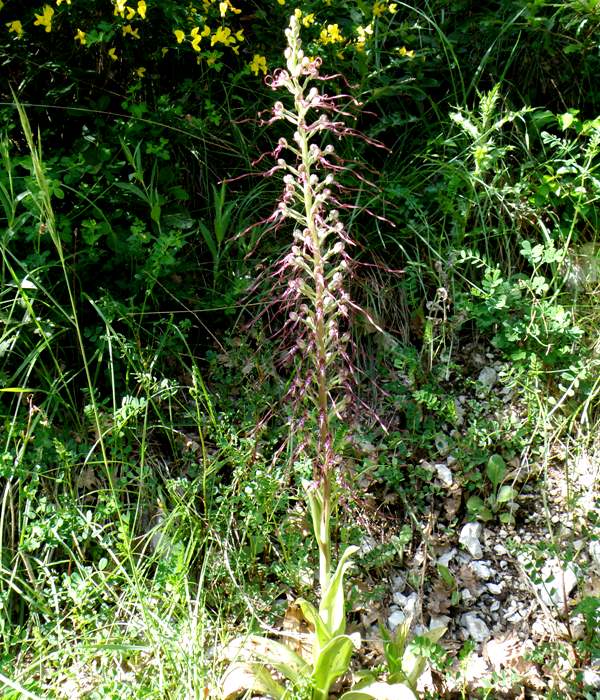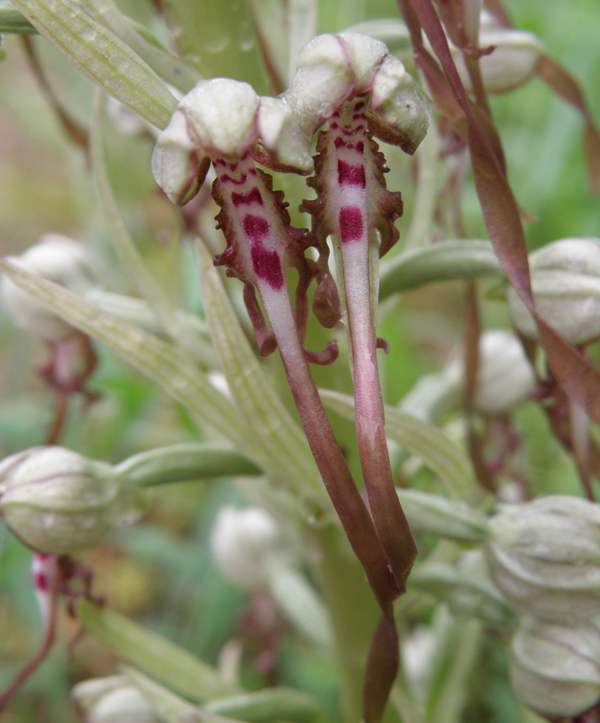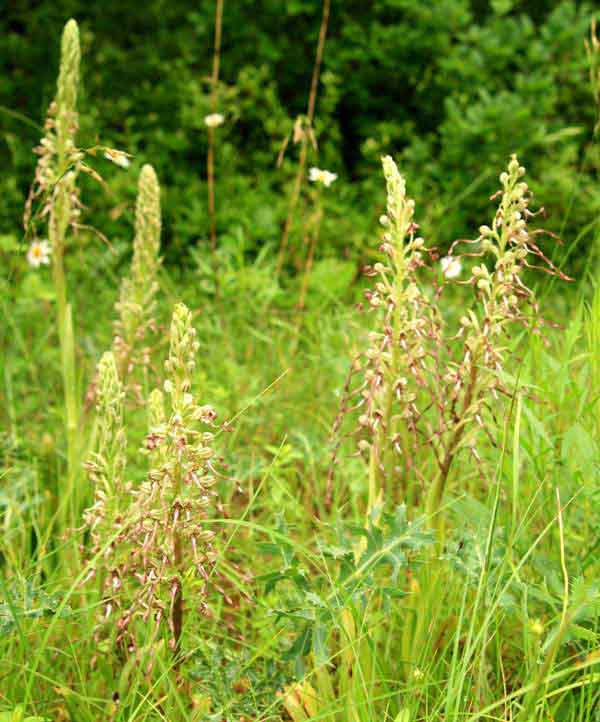Himantoglossum hircinum (L.) Spreng. - Lizard Orchid
Phylum: Magnoliophyta - Class: Liliopsida - Order: Orchidales - Family: Orchidaceae

Description
This orchid is rare in the UK but more easily found in parts of France and other European countries.
It grows up to a metre in height but can nonentheless be difficult to spot if it is growing, as it often does, in long grass on roadside verges which seem to be a favourite location.

The Lizard Orchid is pollinated by insects and, in particular, bees. The long, tail-like lip is often spiralled and dotted with pink or purple in the centre. The flowers have a rather foul smell which is said to be similar to the smell of goats.
Distribution
Now rare in the UK and only appearing there in large numbers on the golf links at Sandwich in Kent and a few nearby gardens, it is widespread but rare and localised in parts of Southern and Central Europe. One of the best places to see this impressive orchid is the Lot Valley in France where the Lizard Orchid occurs in large colonies along the sides of the roads. We have also seen this orchid (or possibly the closely related Himantoglossum caprinum) in Bulgaria where it is rare and localised.
Habitat
The Lizard Orchid grows on calcareous soil and likes sunny positions on roadside verges and on the edges of open woodland

A lovely colony of Lizard Orchids found on the roadside in the Lot Valley in France.
Flowering times
In southern France this orchid starts flowering from late April, but further east in Europe it can still be found in full flower in July.
The specimens on this page were photographed in the Lot Valley, France in late May where they occur in vast numbers on the roadsides and in the meadows.
Taxonomic history
When Carl Linnaeus described this orchid in his Species Plantarum of 1753, he gave it the scientiic name Satyrium hircinum. The currently-accepted scientific name Himantoglossum hircinum (L.) Sprengl. dates from an 1826 publication by the German botanist Kurt Polycarp Joachim Sprengel (1766 - 1833).
Etymology
The genus name Himantoglossum means 'strap tongue' and refers to the strap-like labellum (lip) of the flower. The specific epithet hircinum means 'smelling like a goat'.
Reference sources
The Plant List
Sue Parker (2023) Wild Orchids of Wales - how, when and where to find them; First Nature e-book (Amazon Kindle format)
Pierre Delforge (2005) Orchids of Europe, North Africa and the Middle East; A&C Black
Please Help Us: If you have found this information interesting and useful, please consider helping to keep First Nature online by making a small donation towards the web hosting and internet costs.
Any donations over and above the essential running costs will help support the conservation work of Plantlife, the Rivers Trust and charitable botanic gardens - as do author royalties and publisher proceeds from books by Pat and Sue.


